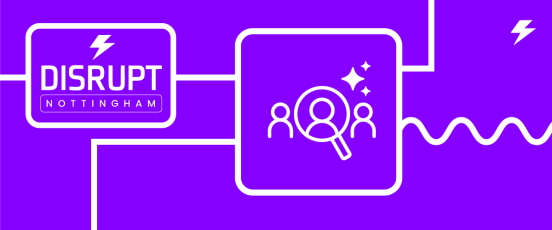How to recruit high performers

I’ve worked in recruitment for over 13 years now, and my focus is always on executing talent strategies that align with business objectives and ensuring a seamless recruitment process. Here are some of my top tips for recruiting high performers.
New research by MHR has shown that a commitment to recruiting, retaining and developing top talent is one of the 10 key drivers of high performance in any organisation. To recruit a high-performing employee, you need to know exactly what to look for and ensure that your organisation is appealing to top talent.
Building an employer brand to attract high performers
Sourcing high performers starts with building a strong employer brand that showcases why your company is a great place to work and what sets it apart from your competitors. To build an employer brand, clearly communicate your organisation’s culture and values on your job adverts, on your website, and on your social media.
When leading business theorist André de Waal joined MHR for a webinar on high performance, he said, “Employees listen to what you do, not what you say”. This is particularly true when it comes to recruitment, as part of building an employer brand is having a strong employee value proposition (EVP) in place. This ensures you’re communicating to current and prospective employees what benefits and opportunities are available to them, and what steps your organisation is actively taking to improve employee experience.
High performers will want to know what’s unique about your company – they won’t just be applying anywhere and everywhere. Once, you’ve established your employer brand, you’ll start to build a presence in the job market, attracting high performers who are a natural fit for your company.
Use employees as brand ambassadors to amplify your message
Using your organisation’s own channels is the best way to start, but don’t ignore the power of your employees’ voices when it comes to building up an employer brand. Encourage employees to showcase company culture on social media by posting about events, company days or courses they’ve completed with your organisation.
They could also share your job adverts on LinkedIn with their own networks. When your employees give testimonials and celebrate your company on their own social media channels, it strengthens your employer brand and incentivises applications from like-minded individuals.
Establish characteristics of high performers
Before you start actively recruiting for high performers, it’s important to establish exactly what characteristics define high performance in the context of your organisation. This will vary depending on size and sector, but fundamentally high performance isn’t just about beating targets or meeting benchmarks; it’s about mindset and behaviours, too.
As put by André de Waal, high performance is “not a recipe; it’s a mindset. It’s the way you look at yourself, at your performance, it’s the way you do continuous improvement”. Typically, high performers will align their goals with company targets and objectives. They’re resilient, adaptable, and know how to learn from mistakes.
High performers consistently deliver results – not just in short bursts but over a long period of time. When recruiting, look for candidates that have a track record of delivering successful results in the long term rather than quick wins or short-term gains.
Analyse your top performing employees
Your existing high performers are a great indicator of what to look for when sourcing new talent. An HR platform can help you to identify who your top performers are, and why they’re high performing, by displaying data like performance reviews and skills development. Take note of the skills, mindsets, or behaviours that your top performers have, and look for these traits in prospective candidates, too.
Creating high performer-centric job descriptions
Generic job descriptions won’t appeal to your target audience or get you the results you’re looking for. They need to be tailored to the specific role, detailing the exact skills and experience required. I’d recommend you outline the impact the role will have and the opportunities available for growth and development, too.
It’s also important not to re-use old job descriptions; they may be out of date and less relevant to what the role looks like now. Ultimately, it’s a two-way street; tailored job adverts lead to tailored applications, making it easier to distinguish candidates from one another and assess whether they’re a high performer or not.
Streamline the recruitment process
A negative experience in the early application stage can quickly discourage a high performer from your company. With a streamlined and consistent application process, aided by a recruitment platform, you’ll ensure every applicant has a positive experience from the start.
It’s also key to communicate with applicants and remain transparent throughout the process. This way, you’ll leave a lasting impression on top talent and incentivise them to commit to your company over any other organisations they’re interviewing with.
Behavioural and competency-based interview strategies
When it comes to the interview stage, ensure every interviewer is consistent when discussing your brand, employer values, and workplace culture with the applicant. Mixed messages can be confusing and deter a high performer from committing.
In an interview, you’ll need to determine whether the candidate is results-orientated, resilient, and committed to continuous learning. Most importantly, a high performer will have a long-term vision, with plans in place for achieving their goals.
In my experience, if you want to assess whether the candidate is a high performer, it’s best to ask questions such as:
Give me an example of a challenging target you were given. How did you approach this, and what was the outcome?
How do you ensure you stay at the top of your game professionally? Can you share an example of a new skill you’ve learnt that has supported your professional growth?
What motivates you to perform at your highest level, and how do you keep this motivation sustained over time?
Can you share a time when you faced a set-back or failure? How did you bounce back, and what did you learn from the experience?
What long-term goals do you have in your career, and how do you plan on achieving them?
Situational behaviour questions like these will give you the most comprehensive overview of a candidate’s experience and capabilities. If they can answer confidently and give clear examples, you’ll know you’ve found your next high performer.
Master the onboarding process
Once you’ve successfully recruited your high-performing applicant, you need to ensure they have a smooth onboarding process. Let them know they are supported from day one and help them integrate into the organisation. Manage their expectations by clearly communicating their responsibilities and targets and assign them a mentor or buddy who can guide them and answer questions. By providing support and building trust like this, your high performer is more likely to stay with you for longer.
Building a high-performance mindset
Dig deeper into what high performance really means with MHR’s new webinar with André de Waal. His globally-leading research has helped hundreds of organisations achieve high performance – yours could be next! Register now for our World of Work 2050 webinar series and you’ll get on-demand access to this webinar, plus the other 11 in the series as they’re released.


